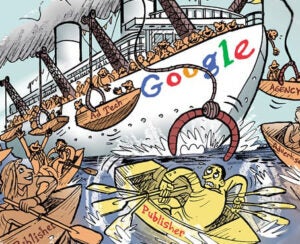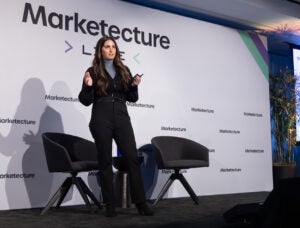 Iggy Fanlo is CEO of AdBrite, an online advertising exchange. The company rolled out new branding and announced video pre-roll inventory was now available in the AdBrite exchange. Read the release.
Iggy Fanlo is CEO of AdBrite, an online advertising exchange. The company rolled out new branding and announced video pre-roll inventory was now available in the AdBrite exchange. Read the release.
AdExchanger.com: AdBrite has been quiet for the past year – up until now. Why?
IF: We’ve been working feverishly on developing world class capabilities. Until we had an industry leading product that exceeded market expectations, we didn’t feel AdBrite would get the attention it deserves. Bringing together 100 percent transparency, 3rd party data application, algorithmic targeting/CTR estimation and auction pricing just doesn’t exist at any other exchange or network. The addition of video changes the game even more.
How does the video component of the AdBrite exchange differentiate from inventory available through Adapt.tv or BrightRoll Exchange?”
BrightRoll has asked to be an RTB on our exchange. My sense is that they are shooting to be a DSP in the video space, not an exchange despite their PR. As for Adap.tv, I think we differentiate on quality (no UGC), 3rd party data capability across almost a dozen providers for contextual, behavioral, etc; and algorithmic targeting (cost per engagement metrics and eventually pricing). We will both run auctions.
What is AdBrite’s business model today?
Regarding publishers, the revenue model is similar to other exchanges where we share the lion’s cut of the gross revenue with them. However, we are different when it comes to 3rd party data and algorithm providers. On CPM campaigns, where advertisers are looking to only run in front of high intent audiences, we offer a novel approach. AdBrite shares 100% of the revenue from these data buys back to the 3rd party providers and we let them set all pricing parameters. The AdBrite exchange benefits from the incremental volume and trading that helps increase fill rates for publishers and give advertisers an added targeting feature. For help with CTR estimation and sharing data on these direct response campaigns, we provide incremental revenue gains.
How will you differentiate and compete against larger exchanges such as Right Media Exchange and DoubleClick Ad Exchange?
That’s fairly straightforward. We continue to be the only exchange that is 100 percent transparent both pre-buy and post-buy on all of our impressions. No one else, small or large, can honestly claim that. Additionally, unlike Google and Yahoo! who own those two exchanges, we are a B2B company and have no direct relationship with consumers. With that, while we abide by all privacy rules and are a proud member of the NAI, we can be more aggressive about our relationships with 3rd party data providers. Our larger competitors have legitimate concerns about how they’ll be portrayed by the media and viewed by consumers since it can have a very large and direct effect on their consumer businesses. We don’t share those concerns.
Another major differentiator is our 3rd party algorithms, think the Netflix competition, but real-time and ongoing, and our analytics platform goes beyond Google analytics with more in-depth intelligence. Finally, AdBrite brings the various pieces of the ecosystem together in one easy-to-use place.
Let’s speak to AdBrite’s value proposition. What is it for advertisers? And publishers?
AdExchanger Daily
Get our editors’ roundup delivered to your inbox every weekday.
Daily Roundup
The value proposition is clear. We shoot for maximum targeting, flexibility, transparency and performance (however it’s measured) by our advertisers. For publishers, its yield, fill rate and flexibility. And yes, for all clients, it’s also high-touch, high-quality customer service.
How important are partners to your exchange beyond buyers and sellers such as data players?
Very important. Whether we are talking about 3rd party data, algorithms, DSPs or others, bringing together the various pieces of the ecosystem is a key AdBrite differentiator and adds a great deal of value for our advertisers (targeting capability),consequently filling rates and overall eCPM for our publishers.
What has happened to your black label/adult business? Is the same inventory available in your AdBrite exchange as the “non-adult” inventory?
While we continue to run an adult business, it is shrinking as an overall piece of our revenue pie. The inventory is strictly separated.
Can you discuss impression levels and dollars flowing through your white label/non-adult inventory exchange?
We run approximately 1 billion impressions daily and have grown between 40-50 percent from Q2 to Q3, but would rather not comment on revenue figures.
What are your plans around funding? Do you need any to scale? How many employees today?
We have approximately 65-70 employees and are looking to expand our sales and engineering capabilities.
Given your experience in the past year, what would you have done differently a year ago if you had had a crystal ball?
I would have attacked video earlier and more aggressively. The adoption rates of the VAST standard that came out in February completely changed the game. Now all of the integration work that was previously required to manually integrate into each and every player and provided a real barrier to entry has almost completely vanished. We believe all of the great technologies we’ve built to optimize the display world will now revolutionize the online video world. In addition, agencies and agency holding companies, are rapidly integrating their online video and TV groups. That effectively combines a $1.5 – 2.0 billion pond with a $60 – 70 billion ocean. This all can mean only one thing; hyper growth in online video.
And a year from now, what milestones would you like the company to have accomplished?
In 6-8 weeks, we will be the only exchange offering display and video with all our targeting technology, as well as offering both inventory types to Real time bidders/DSPs. We need to conquer those mountains. Other types of media (mobile/in-app) and internationalization lie ahead, but we haven’t finalized those timelines.
Follow Iggy Fanlo (@iggyfanlo) and AdExchanger.com (@adexchanger) on Twitter.












